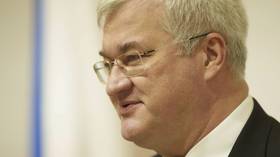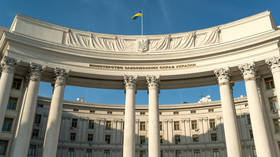Gleb Makarevich: This is the missing link that will firmly connect Russia and India

As expected, Indian Foreign Minister Subramanyam Jaishankar’s visit to Russia at the end of last year had a broad agenda. In addition to the usual issues of political, defense, and cultural partnership, economic cooperation was also discussed.
This aspect of Russian-Indian relations has long been the Achilles’ heel in the otherwise important strategic partnership. Combined trade of just over $10 billion forced Moscow and New Delhi to express concern and declare their desire to increase this amount in the coming years. However, even after announcing modest intentions ($30 billion by 2025), the parties kept returning to the “comfort zone,” reminiscing about the triumphs of traditional cooperation fields – military-technical partnership, nuclear energy, diamond mining, and so on.
The situation changed drastically after Russia launched its military offensive in Ukraine and cooperation with Western countries was restricted due to sanctions and countersanctions. Russia and India have sharply increased mutual trade – in 2022, they reached the $45 billion mark, in 2023 they crossed $50 billion.
But there is a nuance: the basis of this trade is Russian exports, with hydrocarbons being the major component. While this imbalance is unfortunate for both sides, there is no easy solution to this problem. There needs to be something that literally ties the two countries together so that they can exchange larger amounts of other goods. This is why during his visit, Jaishankar spent significant time discussing logistics.
North-South corridor: Expectations and reality
As early as 1999, a group of Indian, Iranian, and Russian transport companies, with the approval of their governments, signed a general agreement on export-import container transportation along the Sri Lanka-India-Iran-Caspian Sea-Russia transport corridor. An intergovernmental agreement was signed in 2000, and in 2002, the transport ministers of the three countries signed an agreement to open the corridor.
Russian politicians and businesses welcomed the idea of the North-South Corridor as it promised economic benefits by shortening trade routes, minimizing political risks in the absence of a strong fleet in post-Soviet Russia, accelerating the development of infrastructure in Caspian ports, and upgrading Astrakhan and Makhachkala to the status of major transportation hubs. In addition, the use of the Western and Trans-Caspian corridors was seen as a way to revitalize Volga River traffic and cut costs on cargo deliveries to Сentral Russia.
Indian elites also saw a number of benefits to the project: its implementation would not only strengthen ties with Russia and Iran, but also give India access to Central Asian markets while ‘bypassing’ Pakistan, as well as the possibility to deliver goods to Europe via Russia.
However, the reality turned out to be more complicated. The need to allocate additional financial resources to upgrade and maintain the project infrastructure, sanctions imposed on Iran, and the unstable situation in Afghanistan prevented the corridor from going online.
By 2022, the hardships associated with the launch of the North-South route had already exhausted several generations of Russian and Indian experts. But the rapidly changing geopolitical realities gave the concept a new push.
As Russia and India stepped up their economic cooperation, a plan that many had given up on finally became operational. All three segments of the corridor, i.e. the Western route (Russia- Azerbaijan- Iran- India), Middle or Trans-Caspian route (Russia-Iran-India), and Eastern route (Russia- Central Asia-Iran-India) are now fully functional.
According to an estimate by Russian Railways, the corridor is currently operating at just about half of its capacity, although it is difficult to calculate the exact volume of transported goods due to a significant share of shadow operations.
Thus, it seems that Russia and India now have every opportunity to increase trade in manufactured goods. But logistics alone is not enough to achieve this goal. There are other, more significant factors, at play.
Self-reliance comes first
The main factor determining India’s foreign trade policy is the country’s specific macroeconomic model, which any of India’s trading partners, including Russia, must understand.
Since the launch of liberal reforms in the 1990s, India has come a long way in terms of economic development. Prior to the global financial crisis in 2008, the country’s annual GDP growth rate was close to 10%. After a brief setback, the economy has picked up pace, but Indian economists have been deliberating ever since whether this is the extent of India’s growth potential, and if a slowdown were to occur, how it would impact the economy.
The Narendra Modi government, upon coming to power in 2014, took the issue seriously and arrived at a sensible conclusion that maintaining the current rate of development required not only betting on the tertiary industry, but stimulating manufacturing as well. Such a policy would help solve several tasks – creating jobs for the population, reducing dependence on international partners, and, lastly, forming a domestic (‘swadeshi’ could be used here) client base for a developed tertiary industry.
This policy was comprehensively reflected in the ‘Aatmnirbhar Bharat’ (Self-reliant India) program, launched in 2020 with the aim of localizing international manufacturing facilities in India. In this regard, getting a stake of India’s market and an opportunity to enter other countries requires Russian businesses to make joint enterprises with local companies.
At the same time, India’s transformation into an export-oriented industrial power is only possible in the long term now. There are two reasons for this. First, India’s political leadership is traditionally interested in developing the domestic market, for both economic (high degree of state involvement in the economy and uneven development of different regions) and social reasons (persisting need to fight poverty and growing demands of the middle class). Second, when it comes to international markets, India will have to face tough competition from players who have already established dominance in certain niches and those who have already been “the factory of the world” for decades. The latter, for sure, refers to China, a rivalry with which shapes India’s foreign policy.
Fostering growth in a competitive environment
New Delhi has expressed concerns about China’s Belt and Road Initiative (BRI) ever since the project was publicly announced. An especially frustrating factor for India’s elites was the inclusion of the Karakoram Highway in the BRI pilot project, the China-Pakistan Economic Corridor (CPEC). The road crosses Gilgit-Baltistan, an area that is part of the Kashmir region disputed by India and Pakistan. As the initiative expanded and encompassed India’s traditional (Sri Lanka, Bangladesh, and Iran) and potential partners (in Middle Asia), New Delhi’s concerns only grew stronger.
The recent events in Sri Lanka have garnered the most attention. First, the port of Hambantota was handed over to a Chinese company as a way for Sri Lanka to pay off its debts, followed by a default on external obligations in 2022, which has reinforced the belief among India’s expert community in the “debt trap” strategy employed by China. They assert that Beijing deliberately burdens its counterparts with debt to establish dependence. The Indians are actively conveying this message to their partners, warning them against close collaboration with China.
Moreover, New Delhi has moved from words to concrete action. In September 2023, during the G20 Summit, plans were announced to commence the construction of the India-Middle East-Europe Economic Corridor (IMEC). However, shortly after experts discussed the project’s potential, it had to be postponed indefinitely due to the escalating Israeli-Palestinian conflict, which makes cooperation between the Arab world and Tel Aviv implausible at this time.
This is unlikely to be New Delhi’s last attempt to create an alternative to China’s BRI. However, these large-scale projects are not merely ‘status’ initiatives. The global economy is increasingly fragmented, leading to two distinct “environments” of infrastructure and technology – one centered around the United States and the other around China.
Moscow comprehends why New Delhi is concerned about Beijing’s expanding influence and why India desires to enhance economic and technological collaboration with the US. Nevertheless, there is no denying that most Eurasian countries are drawn to the favorable conditions offered by China.
India is thus confronted with three tasks: fostering economic growth via the industrial sector, forging robust economic relationships with international partners, and positioning itself in the evolving global economy. These tasks are not contradictory, and in order to accomplish each of them, New Delhi will likely be mindful of pitfalls: renouncing the possibility of engaging with the countries of the “China-centric environment” and fully integrating into the “American-centric network.”
India has many times showcased the art of strategic balance and used the potential for collaboration with all stakeholders in its own interests. In this regard, the establishment of the North-South International Transport Corridor (INSTC) and the Vladivostok-Chennai sea route should serve as fundamental pillars of India’s strategic autonomy. Consequently, economic cooperation will no longer be a “weak link” in Russian-Indian relations in the medium term.
Where India Meets Russia – We are now on WhatsApp! Follow and share RT India in English and in Hindi















